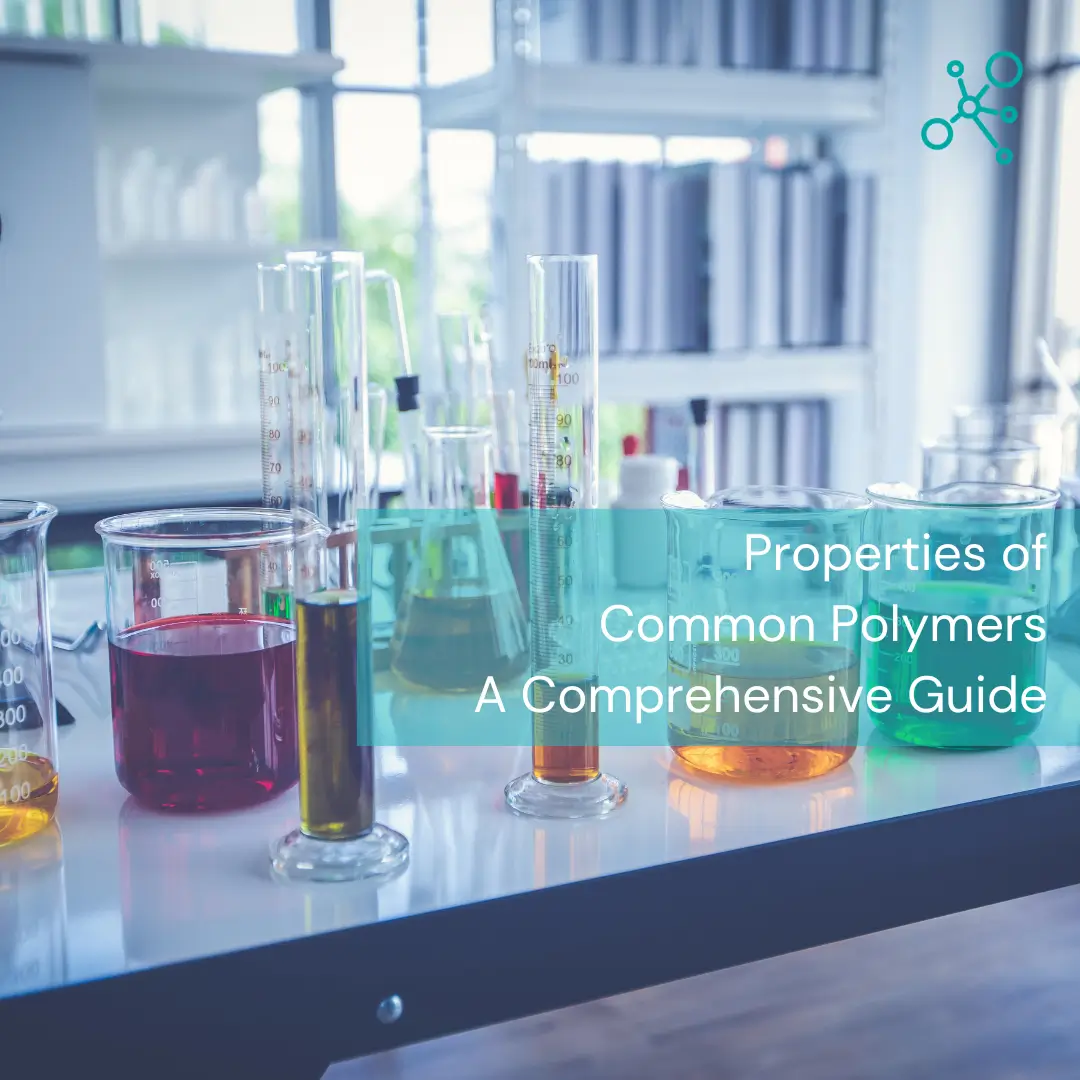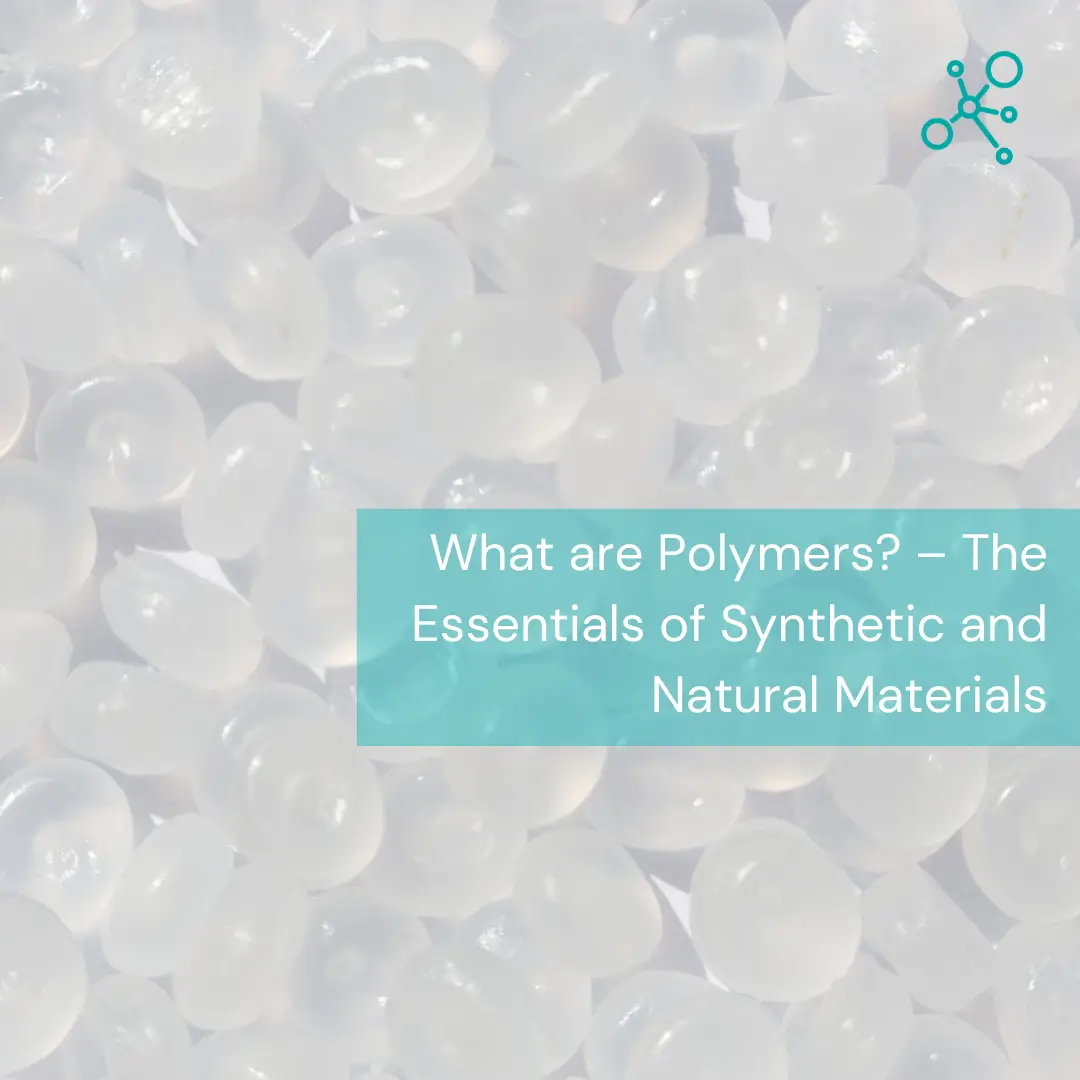
Properties of Common Polymers: A Comprehensive Guide
Understanding the properties of common polymers is essential for anyone involved in the manufacturing, selection, or use of these versatile materials. Polymers are everywhere—in the clothes we wear, the containers we use, the cars we drive, and much more. This guide will delve into the various properties that define common polymers and their applications.
Table of Contents
- Introduction: Understanding the World of Polymers
- The Basics of Polymer Properties
- Physical Properties of Polymers
- Chemical Properties of Common Polymers
- Mechanical Properties of Polymers
- Thermal Properties of Polymers
- Optical Properties of Polymers
- Electrical Properties of Polymers
- Environmental Impact and Sustainability
- Conclusion: The Future of Polymer Technology
- FAQs
- Glossary
- References
Introduction: Understanding the World of Polymers
Polymers are long chains of molecules that have transformed the material world. The term ‘polymer’ comes from the Greek words ‘poly’ (many) and ‘meros’ (parts), reflecting the fact that polymers are made up of many repeating units called monomers. These materials can be natural, like cellulose and rubber, or synthetic, like nylon and polystyrene.
The properties of common polymers are determined by their molecular structure and composition. These properties dictate how a polymer behaves under different conditions and thus its suitability for various applications.
The Basics of Polymer Properties
What Are Polymers?
Polymers are substances whose molecules are large networks formed by the joining of smaller molecules, monomers, through a process called polymerization. They can be found in various forms, such as plastics, resins, and elastomers, each with unique characteristics.
The Building Blocks of Polymers
Monomers are the fundamental units from which polymers are constructed. The nature of the monomers and the way they are linked together determine the type of polymer formed—whether it’s a plastic used in household items or a fiber used in clothing.
Classifying Polymers
Polymers can be classified based on their source:
- Natural Polymers: These include proteins, cellulose, and natural rubber, which are found in nature.
- Synthetic Polymers: These are human-made and include materials like polyethylene, polystyrene, and PVC.
Physical Properties of Polymers
The physical properties of polymers are crucial in determining their practical applications. These properties are influenced by the polymer’s molecular structure, including factors such as chain length, side groups, branching, and cross-linking1.
How Polymers Behave
- Temperature Response: Polymers can be classified as thermoplastics or thermosetting based on their reaction to heat. Thermoplastics soften when heated and can be reshaped, while thermosetting polymers form permanent bonds that do not melt upon reheating.
Polymer Strength and Flexibility
- Chain Length: Generally, longer chains result in stronger polymers.
- Side Groups: The presence of polar side groups can lead to stronger intermolecular forces, enhancing the polymer’s strength.
- Branching: Straight chains allow for closer packing and higher density, resulting in stronger materials.
- Cross-Linking: Extensive covalent bonding between chains creates harder and more heat-resistant polymers.
Polymer Density and Crystallinity
- Crystalline vs. Amorphous: Polymers may contain both crystalline (ordered) and amorphous (disordered) regions. The degree of crystallinity affects properties like toughness and transparency1.
Chemical Properties of Common Polymers
The chemical properties of polymers determine their resistance to various chemicals and environmental conditions. These properties are influenced by the polymer’s composition and the presence of functional groups2.
The Chemical Resistance of Polymers
- Hydrophobic Nature: Most polymers are resistant to polar solvents but can be affected by nonpolar solvents.
- Polarity: Incorporating polar groups can increase a polymer’s interaction with polar solvents.
The Role of Additives in Polymer Chemistry
- Stabilizers: Protect polymers from degradation.
- Plasticizers: Increase flexibility.
- Colorants: Provide color to polymers.
Mechanical Properties of Polymers
Mechanical properties are critical for understanding how polymers will perform under stress. These properties include tensile strength, elasticity, and toughness, which are influenced by the polymer’s molecular structure and composition123.
Stress and Strain in Polymers
- Tensile Strength: The maximum stress a polymer can withstand while being stretched.
- Elasticity: The ability of a polymer to return to its original shape after deformation.
- Young’s Modulus: A measure of stiffness, defined as the ratio of stress to strain.
Impact Resistance of Polymers
- Toughness: The ability of a polymer to absorb energy and plastically deform without fracturing.
Thermal Properties of Polymers
The thermal properties of polymers, such as melting point and thermal conductivity, dictate how they behave in response to temperature changes415.
Polymers and Heat
- Melting Points: The temperatures at which polymers transition from solid to liquid.
- Glass Transition Temperatures: The temperature range where polymers go from a hard, glassy state to a soft, rubbery state.
Thermal Conductivity of Polymers
- Insulation Properties: Polymers are generally poor conductors of heat, making them good insulators.
Optical Properties of Polymers
Optical properties determine how polymers interact with light, affecting their transparency and color6789.
Transparency and Color in Polymers
- Refractive Index: A measure of how much light is bent when entering the polymer.
- Birefringence: The difference in refractive indices in different directions within a polymer.
Electrical Properties of Polymers
Electrical properties, such as conductivity and dielectric strength, are essential for polymers used in electronic applications1011121314.
Polymers as Insulators
- Dielectric Strength: The maximum electric field a polymer can withstand without breaking down.
Conductive Polymers
- Photoconductive Properties: Some polymers can become conductive upon exposure to light.
Environmental Impact and Sustainability
The production, use, and disposal of polymers have significant environmental impacts, necessitating sustainable practices in polymer recycling and management1516171819.
Biopolymers and the Environment
- Biodegradability: Some polymers are designed to break down in the environment, reducing pollution.
Recycling and Reuse of Polymers
- Recycling Techniques: Methods to repurpose polymers, including mechanical and chemical recycling.
Conclusion: The Future of Polymer Technology
Polymers are long chain molecules with properties that are largely influenced by their chain behavior and chemical constitution1. The distinction between thermoplastics and thermosets, while traditionally clear, has become blurred with the development of new materials designed for more demanding environments1. Advances in molecular engineering and polymerization processes have expanded the range of available polymers, both in terms of general-purpose materials and specialty polymers1.
The future of polymer technology is promising, with ongoing research into high-performance polymers that are more resistant to high temperatures and possess greater strength. The potential for polymers to be tailored at a molecular level through copolymerization and other techniques allows for a precise balance of physical properties to match specific application needs1.
As we continue to push the boundaries of polymer science, the importance of sustainable practices becomes paramount. The environmental impact of polymer production, use, and disposal is a growing concern, and efforts are being made to develop biodegradable polymers and improve recycling techniques1.
FAQs: Common Questions About Polymer Properties
- What determines the strength of a polymer?
- How does temperature affect polymer properties?
- Can polymers be both rigid and flexible?
- Are all polymers transparent?
- Transparency in polymers depends on their crystallinity. Amorphous polymers are often transparent, while crystalline polymers tend to be opaque due to light scattering5.
Glossary: Key Terms in Polymer Science
- Monomer: The basic building block of a polymer.
- Polymerization: The chemical process that combines monomers to form a polymer.
- Thermoplastic: A type of polymer that becomes pliable when heated and solidifies upon cooling.
- Thermoset: A polymer that forms irreversible bonds when cured, making it resistant to melting.
- Crystallinity: The degree to which a polymer exhibits a structured, ordered arrangement of molecules.
- Elastomer: A type of polymer with elastic properties, allowing it to stretch and return to its original shape.
References: Further Reading on Polymer Properties
- “Properties of Polymers” – Chemistry LibreTexts2.
- “Polymer Structure and Physical Properties” – Chemistry LibreTexts3.
- “Polymers and Polymeric Composites: A Reference Series” – Springer6.
- “Physical Properties of Polymers Handbook” – SpringerLink7.
Conclusion: The Future of Polymer Technology
The world of polymers is vast and ever-evolving. With advancements in polymer science, we are witnessing the development of materials that can withstand extreme conditions, exhibit superior strength, and offer enhanced flexibility. These high-performance polymers are paving the way for innovations across various industries, from aerospace to biomedicine1.
The future of polymer technology lies in the ability to tailor materials at the molecular level. Through techniques like copolymerization and advanced polymerization processes, scientists can fine-tune the properties of polymers to meet specific needs. This customization will be crucial in addressing the challenges of sustainability and environmental impact, as the industry moves towards biodegradable polymers and more efficient recycling methods1.
As we continue to explore the potential of polymers, the focus on sustainable practices will become increasingly important. The goal is to create polymers that not only perform exceptionally but also contribute to a greener future1.
FAQs: Common Questions About Polymer Properties
- What are the key factors that determine the strength of a polymer?
- How does temperature affect the properties of polymers?
- Can polymers be designed to be both strong and flexible?
- Why are some polymers transparent while others are not?
- The transparency of a polymer is related to its crystallinity. Polymers with low degrees of crystallinity tend to be more transparent5.
Glossary: Key Terms in Polymer Science
- Monomer: The basic unit from which polymers are built.
- Polymerization: The process of linking monomers to form a polymer.
- Thermoplastic: A polymer that becomes pliable when heated and solidifies upon cooling.
- Thermoset: A polymer that, once cured, cannot be melted.
- Crystallinity: The degree to which a polymer’s structure is ordered, affecting its properties.
- Elastomer: A polymer with elastic properties, capable of returning to its original shape after stretching.
References: Further Reading on Polymer Properties
- “Properties of Polymers” – Chemistry LibreTexts2.
- “Polymer Structure and Physical Properties” – Chemistry LibreTexts3.
- “Polymer Chemistry: Mechanical Properties” – Engineering LibreTexts4.
- “Polymer: Definition, Properties, Types, and Applications” – Xometry5.
- “Polymers and Polymeric Composites: A Reference Series” – Springer6.
- “Physical Properties of Polymers Handbook” – SpringerLink7.
Conclusion: The Future of Polymer Technology
As we look to the future, the role of polymers in technology and everyday life is set to grow even more significant. Innovations in polymer science are leading to materials that are stronger, more durable, and more versatile than ever before. The development of polymers with specific properties tailored to unique applications is a testament to the advancements in molecular engineering and polymerization techniques.
The sustainability of polymers is also a critical area of focus. As the environmental impact of polymer production and disposal becomes more apparent, the industry is shifting towards more sustainable practices, including the development of biodegradable polymers and more efficient recycling methods. The future of polymers lies in creating materials that not only meet the demands of modern technology but also align with the principles of environmental stewardship.
FAQs: Common Questions About Polymer Properties
- What factors influence the mechanical properties of polymers?
- How do temperature changes affect polymers?
- What is the difference between amorphous and crystalline polymers?
- Amorphous polymers lack a defined structure, making them generally more flexible and transparent. Crystalline polymers have a more ordered structure, which contributes to their strength and rigidity1.
Glossary: Key Terms in Polymer Science
- Monomer: A small molecule that can be chemically bonded to other monomers to form a polymer.
- Polymerization: The process by which monomers are chemically bonded to form a polymer chain.
- Thermoplastic: A type of polymer that becomes soft when heated and hard when cooled.
- Thermoset: A polymer that becomes irreversibly hard when cured.
- Crystallinity: The degree to which a polymer exhibits a structured, ordered arrangement of molecules.
- Elastomer: A polymer with elastic properties, capable of stretching and returning to its original shape.
References: Further Reading on Polymer Properties
- “Properties of Polymers” – Chemistry LibreTexts1.
- “Polymer Structure and Physical Properties” – Chemistry LibreTexts2.
- “Polymers and Polymeric Composites: A Reference Series” – Springer3.
- “Physical Properties of Polymers Handbook” – SpringerLink4.
This blog post has provided a comprehensive overview of the properties of common polymers, their applications, and the future direction of polymer technology. If you have any further questions or need additional information, please feel free to ask.


I enjoyed reading this article. Thanks for sharing your insights.